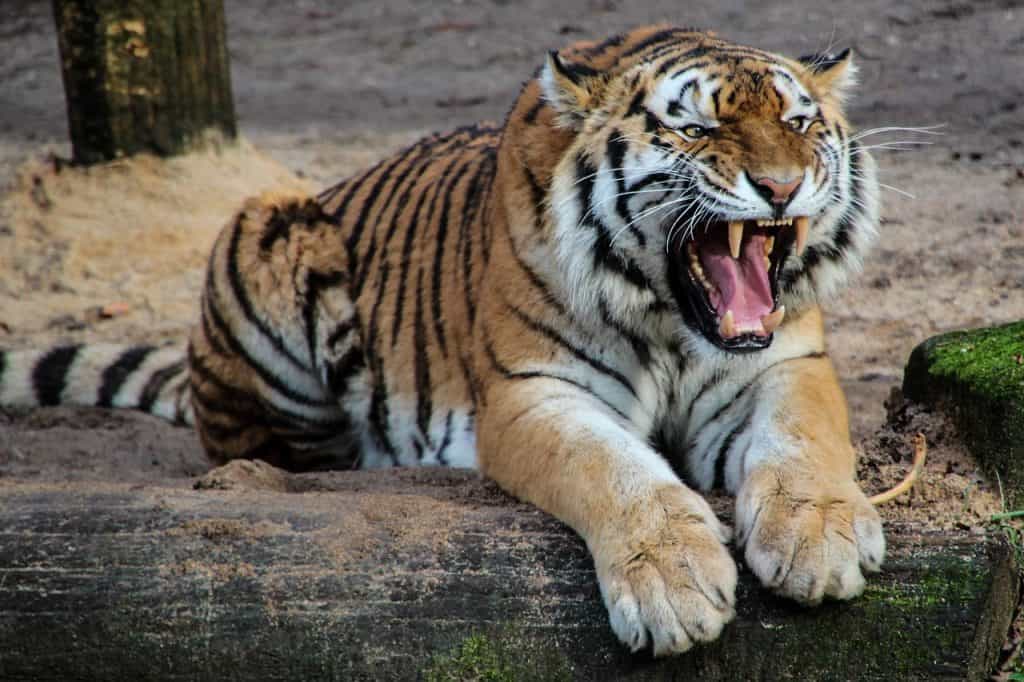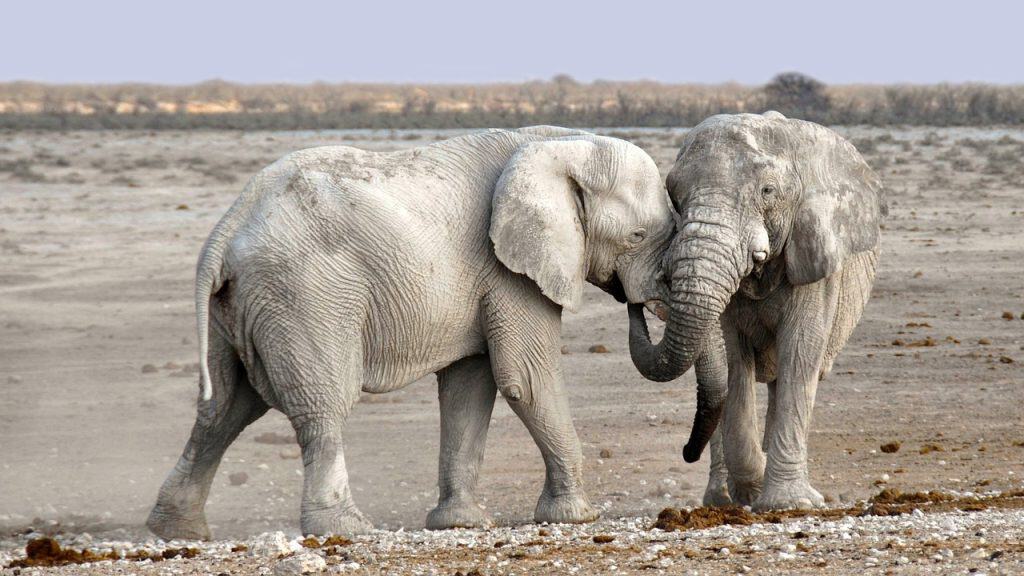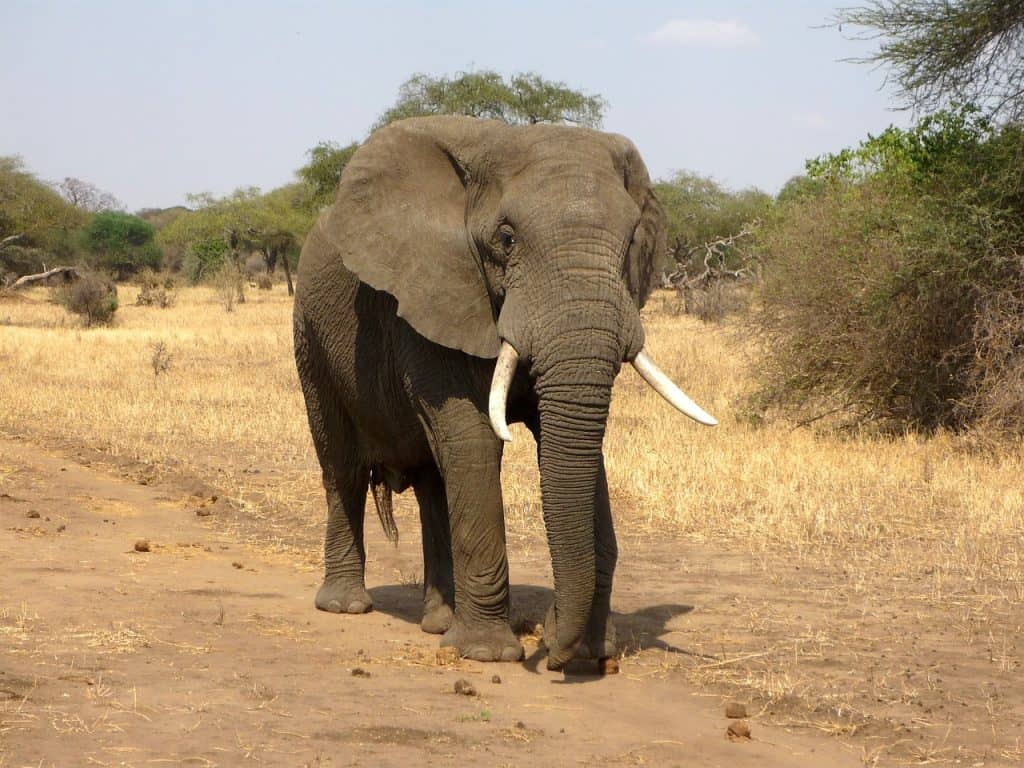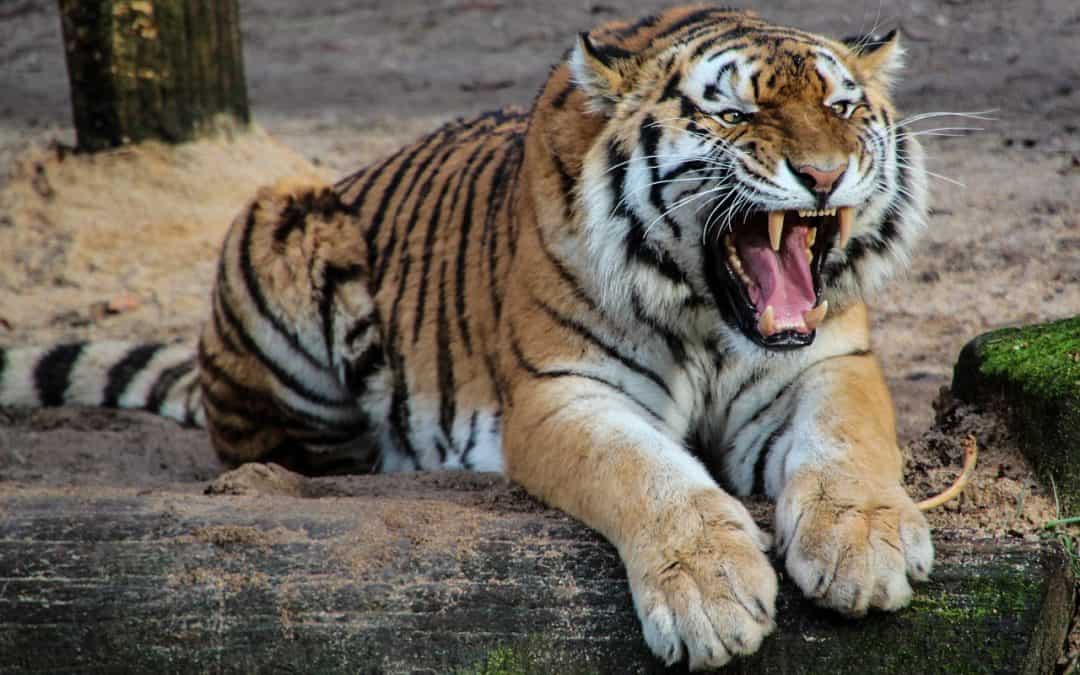So, you’ve always been captivated by the beauty of wildlife and the thrill of the hunt? Well, picture this: the vast wild landscapes of the majestic Gonarezhou National Park, teeming with an incredible array of exotic animals. Imagine yourself getting up close and personal with the Big Five and embarking on an unforgettable hunting adventure. In this article, we’ll take you on a virtual journey into the heart of this African paradise and explore the unique experiences and challenges that come with hunting in Gonarezhou National Park. Get ready for an adrenaline-fueled expedition that will leave you breathless and yearning for more.
Overview of Gonarezhou National Park
Gonarezhou National Park, located in southeastern Zimbabwe, is a vast and diverse wilderness area that boasts a rich array of wildlife and natural beauty. Covering an impressive area of approximately 5,053 square kilometers, the park is part of the Great Limpopo Transfrontier Conservation Area, which spans across three countries: Zimbabwe, South Africa, and Mozambique.
Biodiversity and conservation status
The park is home to an incredible variety of plant and animal species, making it a biodiversity hotspot. From towering baobab trees to graceful elephants, Gonarezhou offers a unique and captivating experience for nature enthusiasts. The park is particularly known for its large herds of elephants, as well as its thriving populations of buffalo, lions, leopards, and numerous bird species.
In terms of conservation status, Gonarezhou National Park is classified as a protected area, aiming to preserve and restore the natural habitats and wildlife populations within its borders. Efforts to combat poaching, illegal hunting, and habitat destruction have been vital in maintaining the park’s ecological integrity and ensuring the survival of its diverse flora and fauna.

Tourism and recreational activities
For those seeking an exceptional wildlife experience, Gonarezhou National Park offers a range of recreational activities. From game drives and guided walking safaris to birdwatching and camping, there is something for everyone. The park also boasts numerous picnic spots and viewpoints, allowing visitors to immerse themselves in the park’s natural splendor while enjoying a break from their adventures.
Moreover, the park provides a unique opportunity for visitors to learn about and engage in community-based tourism initiatives. Local communities have developed various cultural tourism offerings, providing insights into their traditions, crafts, and ways of life. By participating in these activities, tourists can contribute directly to the local economy and support sustainable development in the region.
Hunting in Gonarezhou National Park
History and regulations
Hunting has a long and storied history in Gonarezhou National Park. Traditionally, local communities relied on hunting for sustenance and cultural practices. Over time, hunting in the park evolved, with the establishment of regulations and permits to ensure conservation and sustainable practices. Today, hunting in Gonarezhou is strictly regulated, with specific seasons, quotas, and permit requirements in place.
Hunting seasons and quotas
To maintain healthy wildlife populations and preserve the park’s biodiversity, hunting seasons in Gonarezhou National Park are carefully managed. These seasons are determined based on various factors, including population dynamics and ecological considerations. Furthermore, quotas are established to ensure that the hunting of certain species remains sustainable and does not exert undue pressure on their populations.
Types of hunting permits
When it comes to hunting in Gonarezhou National Park, there are different types of permits available. For trophy hunting, which typically involves hunting large game animals for their impressive horns or tusks, specific permits are required. These permits are issued based on the species, sex, and size of the animal being hunted. It is essential to obtain the necessary permits and adhere to the regulations to ensure ethical and legal hunting practices.

Wildlife in Gonarezhou National Park
Iconic species
Gonarezhou National Park is known for its iconic and awe-inspiring wildlife species. One of the park’s most iconic inhabitants is the African elephant. These majestic creatures roam the park in large herds, their sheer size and gentle nature captivating visitors. Other iconic species include buffalo, known for their powerful presence, and lions, with their regal manes and elusive nature. Seeing these animals in their natural habitat is a truly remarkable experience.
Endangered species
While Gonarezhou National Park is a sanctuary for many species, it also serves as a refuge for several endangered animals. One such species is the African wild dog, also known as the painted wolf. With its distinct coat pattern and social behavior, the African wild dog is an important target for conservation efforts. The park is also home to the critically endangered black rhinoceros, emphasizing the significance of protecting these magnificent creatures and their habitats.
Other wildlife attractions
In addition to its iconic and endangered species, Gonarezhou National Park offers an abundance of other wildlife attractions. Visitors can spot graceful giraffes gracefully browsing on acacia trees, zebra herds galloping across the savannah, and stealthy leopards camouflaged within the dense foliage. Furthermore, the park boasts a remarkable diversity of bird species, with over 400 recorded within its boundaries. Bird enthusiasts will be enthralled by the vibrant plumage and melodic calls of the park’s avian inhabitants.
Sustainable Hunting Practices
Conservation benefits
Sustainable hunting practices in Gonarezhou National Park have demonstrated several conservation benefits. By enforcing strict regulations and quotas, hunting activities can be carefully managed to maintain balanced ecosystems. Hunting can help control wildlife populations, preventing overgrazing and the depletion of resources. Additionally, regulated trophy hunting can generate revenue for conservation efforts, supporting habitat restoration, anti-poaching initiatives, and research programs.
Ethical considerations
Ethics play a crucial role in sustainable hunting practices within the park. Hunting activities must adhere to strict guidelines to ensure the welfare of animals and prevent unnecessary suffering. Licensed outfitters and professional hunters are required to uphold ethical standards, emphasizing the importance of clean and humane kills. This ensures that hunting remains a respectful and responsible pursuit that prioritizes the welfare of both the hunted and the ecosystem as a whole.
Community involvement in hunting
Sustainable hunting practices in Gonarezhou National Park also involve the local communities. These communities play a vital role in conservation efforts by acting as the park’s custodians and stakeholders. By engaging local communities in wildlife management and providing opportunities for sustainable hunting, the park fosters a sense of ownership and encourages the conservation of natural resources. This collaborative approach promotes the sustainable use of wildlife while benefiting local economies and livelihoods.

Preparing for a Hunting Trip
Choosing licensed outfitters
When planning a hunting trip to Gonarezhou National Park, selecting a licensed outfitter is essential. Licensed outfitters are responsible for organizing and conducting hunts in accordance with the park’s regulations. They provide expertise, equipment, and guidance, ensuring a safe and successful hunting experience. Researching and choosing a reputable outfitter is crucial for a well-organized and responsible hunting expedition.
Equipment and gear
Proper equipment and gear are necessary for a successful hunting trip in Gonarezhou National Park. Hunting rifles, ammunition, and appropriate clothing are essential items to pack. It is crucial to check the park’s regulations regarding permitted equipment and firearm calibers to ensure compliance. Depending on personal preferences and hunting strategies, additional gear such as binoculars, camouflage clothing, and hunting blinds may be required.
Obtaining necessary permits and licenses
Before embarking on a hunting trip in Gonarezhou National Park, obtaining the necessary permits and licenses is a mandatory step. These permits allow hunters to legally pursue certain species and specify the hunting methods permitted. It is vital to familiarize oneself with the park’s regulations, including bag limits and species restrictions, to ensure full compliance. Obtaining permits well in advance of the trip and having them readily available during the expedition is crucial to avoid any legal issues.
Hunting Techniques and Strategies
Spot and stalk
Spot and stalk hunting is a common technique employed in Gonarezhou National Park. Hunters use binoculars or spotting scopes to locate their desired game from a distance. Once the animals’ location is determined, stealthy movement and careful stalking are utilized to get within shooting range. This technique requires patience, keen observation skills, and a deep understanding of animal behavior.
Ambush hunting
Ambush hunting, also known as stand hunting, involves patiently waiting for game animals at a designated location. This technique requires knowledge of animal movements, including their feeding, drinking, or mating patterns. Hunters set up concealed blinds or tree stands in strategic locations and remain motionless until their targeted animals enter their line of sight. Ambush hunting can be highly effective, particularly when positioned near water sources or high-traffic areas.
Rifle and bow hunting
Both rifle and bow hunting are popular methods pursued in Gonarezhou National Park. Rifles provide increased accuracy and longer effective range, making them suitable for larger and more elusive game. Bow hunting, on the other hand, requires greater proximity to the animals, relying on stealth and precise shot placement. The choice between rifle and bow hunting ultimately depends on individual preferences, experience, and skill levels.
Challenges and Risks
Poaching and illegal hunting
One of the most significant challenges faced in Gonarezhou National Park is poaching and illegal hunting. These unlawful activities pose a serious threat to wildlife populations and disrupt conservation efforts. Illegal hunters target species for bushmeat, ivory, and other valuable body parts, contributing to the decline of endangered species. To combat this issue, park authorities employ anti-poaching units and collaborate with local communities to raise awareness and enforce stricter regulations.
Human-wildlife conflicts
Human-wildlife conflicts present another challenge in Gonarezhou National Park. As human populations expand and encroach upon wildlife habitats, instances of wildlife-human interaction increase. Crop raiding by elephants and conflicts with predators can result in economic losses and safety concerns for local communities. Implementing effective mitigation strategies, such as providing alternative income sources and implementing predator-proof enclosures, can help manage these conflicts and preserve harmonious coexistence.
Environmental risks
The conservation efforts within Gonarezhou National Park face environmental risks, including habitat degradation and climate change. Deforestation, soil erosion, and invasive species pose threats to the park’s delicate ecosystems. Additionally, climate change impacts, such as altered rainfall patterns and increased temperatures, can disrupt wildlife behaviors and vegetation dynamics. To mitigate these risks, park management focuses on habitat restoration, fire management, and long-term climate resilience planning.
Successful Hunting Stories
Tales of trophy hunts
Gonarezhou National Park has witnessed numerous successful trophy hunts over the years. These stories often revolve around the pursuit and harvest of notable specimens, such as elephants with impressive tusks or buffalo with remarkable horns. Trophy hunts not only provide hunters with unforgettable experiences but also contribute to wildlife management and conservation efforts through the revenue generated.
Notable records and achievements
Gonarezhou National Park has recorded several notable records and achievements in the hunting world. This includes remarkable trophy sizes, record-breaking shot distances, and notable hunting expeditions. These achievements serve as a testament to the park’s abundant wildlife and the skill and dedication of the hunters who pursue their quarry within its vast boundaries.
Conservation success stories
Beyond the realm of hunting, Gonarezhou National Park has also achieved significant success in wildlife conservation. The park’s efforts have resulted in the increase of various animal populations, including the African wild dog, which has seen a notable recovery. Extensive anti-poaching initiatives, educational programs, and collaboration with local communities have contributed to these achievements, emphasizing the crucial role of conservation in preserving biodiversity.
The Economic Impact of Hunting
Revenue generation for conservation
Hunting in Gonarezhou National Park plays a significant role in generating revenue for conservation initiatives. Permit fees, hunting expedition costs, and related expenses all contribute to funding vital conservation efforts. The revenue generated from hunting activities goes towards anti-poaching patrols, habitat restoration, wildlife research, and infrastructure development, ensuring the long-term sustainability of the park’s natural resources.
Supporting local communities
In addition to funding conservation efforts, hunting also plays a vital role in supporting local communities. Licensed outfitters and hunting operators often work closely with community members, providing employment opportunities, skills training, and income diversification. These economic benefits create a direct link between wildlife conservation and community well-being, reinforcing the importance of sustainable hunting practices.
Job creation and tourism benefits
Hunting in Gonarezhou National Park creates employment opportunities across various sectors. Licensed outfitters and hunting operators require guides, trackers, cooks, and other support staff, stimulating local job markets. Additionally, hunting activities attract tourists interested in unique wildlife experiences, benefiting the local tourism industry. These visitors contribute to local businesses, accommodation providers, and other related services, bolstering the overall economic impact of hunting in the region.
Ecotourism and Conservation
Balancing hunting and tourism
Balancing hunting and tourism is an ongoing challenge within Gonarezhou National Park. The park management aims to strike a balance between these two activities, ensuring that sustainable wildlife-based tourism and hunting can coexist harmoniously. Responsible hunting practices and regulations are implemented to minimize any negative impacts on the tourism sector. By effectively managing both hunting and tourism, the park can maximize its economic potential while safeguarding its natural resources.
Conservation initiatives and research
Gonarezhou National Park actively engages in various conservation initiatives and research programs. These efforts span from anti-poaching operations and habitat restoration projects to wildlife population monitoring and biodiversity studies. Conservationists, researchers, and local communities collaborate to gather valuable data and implement effective conservation strategies. This commitment to research and conservation ensures that the park remains a sanctuary for its diverse wildlife and contributes to global conservation efforts.
Alternative wildlife-based tourism
In addition to hunting, Gonarezhou National Park offers alternative wildlife-based tourism opportunities. These include guided game drives, birdwatching excursions, nature walks, and cultural tourism experiences. These alternatives cater to non-hunting tourists who seek to experience the park’s natural wonders and cultural heritage without participating in hunting activities. By offering diverse tourism options, the park can attract a broader range of visitors, enhancing its economic sustainability and supporting conservation efforts.
In conclusion, Gonarezhou National Park presents a unique and comprehensive hunting experience while promoting sustainable wildlife management and conservation. The park’s regulations and efforts to involve local communities ensure the ethical and responsible pursuit of hunting activities. Beyond hunting, the park’s rich biodiversity, conservation initiatives, and alternative tourism options further contribute to its economic impact and long-term sustainability. Visiting Gonarezhou National Park allows you to immerse yourself in the beauty of nature, witness incredible wildlife, and actively contribute to the preservation of this remarkable wilderness.


